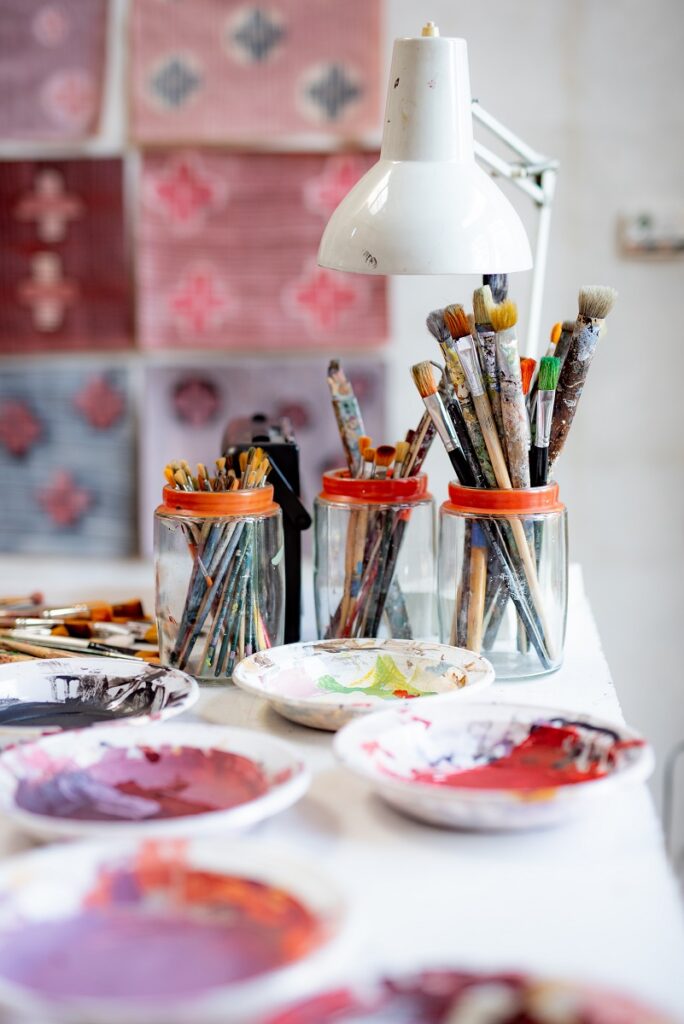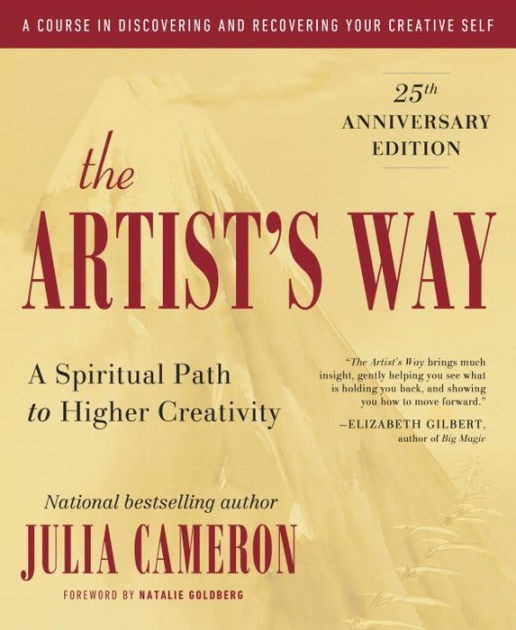Table of Contents
Ludwig van Beethoven, Vincent van Gogh, Virginia Woolf, Edward Munch, Jackson Pollock… There are two things that connect these people. First, they were all famed artists – musicians, painters, writers… Second, they all suffered from some form of depression. And that is an eternal question for science – is there a link between creativity and depression?
Are all people who suffer from some kind of depression more creative than those who are not? Or are highly creative people more prone to developing depressive disorders? We dove deep into the studies to come up with the answer. So if you ever wondered the same question, read on.
Famed artists who suffered from depression
Countless influential poets of the 18th and 19th centuries, such as Lord Byron and William Blake, actually wrote about the extreme mood swings they had to endure. Many modern poets were even hospitalized due to the severity of their depressive episodes.

Looking at Munch´s The Scream˝, one of the most iconic masterpieces of painting, it is clear to anyone that before them is a scene of intense psychological distress. Thanks to excerpts from Munch´s diary, we know that he depicted a real-life event. Even though he suffered his whole life from a psychological illness, he recognized and accepted it as a source of his genius. Convinced that he could not create art without it, he did not want to resolve it.
Van Gogh also walked the thin line between madness and genius. Commercially unsuccessful during his life, even though extremely prolific, Gogh´s works of art today reach more than $60 million. Reading the correspondence between him and his brother Theo, it is evident that Vincent was aware of his disturbing psychological state. But was unable to understand and explain it, let alone embrace it as part of his ingenuity, as Munch did.
If he was aware of what was happening to him and how that affected his art, would he be able to deal with it better?

Dealing with mental illness is no longer taboo
Thanks to wider psychological education, the topic of depression became less taboo. Many famous people and prominent figures are speaking out about mental illness, sharing their stories and experiences.
Some of the most successful artists in the world at the moment – Adele, Lady Gaga, Kristen Bell, Zayne Malik, Cara Delavingne, and many, many more, openly talked about the difficulties they have dealt with depression, anxiety, or some form of mental disorder. Thanks to their stories, mental illnesses are becoming less and less taboo and people are starting conversations around those topics. Some artists accepted it as a part of their lives, and some stated that they have created their best works when in bouts of depression. For many, these episodes empowered them to become stronger and create outstanding work!
Exploring the Connection: Scientific Insights into Creativity and Depression
What does science have to say about the link between creativity and depression?
It was only in the past two decades that science made an effort to conduct systematic studies on this topic. One of the first was completed in 1970 by Nancy C. Andreasen who examined 30 people in the field of creative writing and has noticed a high prevalence of mood disorders amongst them. In all of the succeeding studies, the percentages of participants (writers, visual artists, poets, painters, musicians, etc.) who experienced some kind of mood disorder were always pretty high.
Even though there have been many scientific efforts to provide an answer to the above question, none have been conclusive. Some believe that those suffering from depression and other mental illnesses turn to art and creative lines of work as some sort of therapy. Others claim that it is depression that provides inspiration and acts as a subject for many artists´ works. Then there are those who say that artists have to experience the ultimate depths of emotional pain to produce works of the highest quality. Most probably, it´s everything combined.
- One thing is for certain – creative professionals are more often treated for mental illness than the rest of the population, according to researchers at the Karolinska Institutet (Sweden). Their study tracked more than 1.2 million Swedish patients, along with their families, and has confirmed what they had already suspected. Bipolar depression was more present among artistic and scientific professionals (authors, dancers, photographers, etc.)
- Similar results were obtained by Christa Taylor from Albany State University who conducted a similar study involving millions of participants. They noticed a clear connection between having creative tendencies and mood disorders, most commonly bipolar depression. A study led by Ruth L. Richards at Harvard University corroborated this conclusion, showing enhanced creativity amongst manic-depressive patients when compared with healthy individuals.
Is it possible that depression could enhance creativity and be the source of genius?
- Taylor further investigated whether those individuals with clinically diagnosed mental illnesses are more creative compared to healthy individuals. It turned out that this was not the case. What do these findings mean in reality? They suggest that indeed creative people are more prone to suffering from mental illnesses. But it is not the illness itself that causes this characteristic.

What are the statistics about depression?
In which way do these major mood disorders actually affect the work of artists?
It seems that having a low mood can benefit creativity, allowing for deeper thoughts and new perspectives.
- One possible answer comes from a neurobiologist at the University of California-Irvine, James Fallon. He claims that the spikes in creativity, in patients suffering from bipolar disorders, appear when they are suffering from deep depression. This is because brain activity shifts when the mood improves. The lower part of the frontal lobe, a brain region, experiences a decrease in activity while the opposite happens in the higher part. The same happens when people are experiencing periods of intense creativity.
- At the same time, a study led at Tuft University showed that people suffering from depression process their emotions much more difficult than those who are not dealing with mental health issues. This is due to the ventromedial prefrontal cortex, a part of the brain that regulates emotional outputs, being hyperactive. So these individuals could find that the only way they could express these emotions is through art.
Can creativity heal depression?
Even though it is still unclear whether it´s that a higher predisposition towards creativity entails at the same time higher predisposition towards depression, or if those more prone to depressive disorders tend to be more creative. However, it seems that using creativity in an efficient way can prove to be beneficial.
Art therapy can improve mental health in general, participating in creative activities can decrease stress and anxiety, and balance out mood oscillations. Since last year, in Canada, doctors have even prescribed museum visits to combat physical and mental ailments. They rely on the scientifically proven benefits of art on health. say that the benefits are similar to those patients can get from physical activity.
Art is helping people express themselves at a very deep level and when seeing that there exist other options, gives hope that things can change.

Mardie Rossie (EdD, LMHC)
Furthermore, when we are involved in creative processes, the ˝happiness˝ hormone dopamine is released. When we finish a project, especially an enjoyable and meaningful one, a feeling of psychological satisfaction emerges called ˝effort-driven rewards˝, which reinforces brain circuits. This indicates that activities such as dancing, making music, painting, sculpting, and photography, any of which involve using our senses to create something on our own, stimulate the release of brain chemicals effective in battling depression.
Photography, when embraced as art therapy, can be a powerful means of channeling emotions and navigating the complexities of depression. Through the lens, individuals can capture moments, textures, and perspectives that reflect their inner world, providing a safe outlet for self-expression. The act of composing and capturing images not only cultivates mindfulness but also encourages a deeper connection with the surrounding environment. Just like brush strokes on canvas, each photograph becomes a unique manifestation of emotions that might be difficult to articulate otherwise. Photography, in its ability to freeze time and emotion, becomes a therapeutic medium for individuals seeking to explore, process, and ultimately heal from the depths of depression.
The Role of Art Therapy in the Treatment of Depression
Through creative processes we are encouraged to dig deeper into our consciousness, get to know ourselves better, and deal with our emotions and fears, using art as an outlet to express them in a healthy way. By doing this, we heal our souls and pave the way to overcoming depression, besides just using medication and regular forms of therapy. This is the winning combination for diminishing the feelings of sadness, loneliness, anxiety, and many others that accompany depressive disorders.
You don’t need to be a highly creative person to embark on the journey of artistic self-discovery and emotional healing. Choose the medium in which you feel most comfortable and either alone or with the guidance of a licensed therapist, use the healing power of Art therapy to strengthen your mental health and reach an emotional balance.
Encourage your depression healing by taking an art class
Apart from learning a new skill and having a creative outlet, by taking a group class, you will also be part of the community. Being part of a community can have a positive effect on mental health and emotional well-being. Community involvement provides a sense of belonging and social connectedness and it also offers extra meaning and purpose to everyday life. Taking a painting, dance, acting, makeup class – any kind of art class will also develop your skills faster and you will feel good about your progress. And as soon as you know – you will get hooked on it, and your mind will be occupied with something you LOVE doing. And that is the most powerful tool for a happier and calmer mind.

Beyond Visual Arts: Creativity in Other Forms
The healing power of creativity transcends the canvas and extends to a multitude of expressions. Writing, music, dance, cooking, and more can all serve as potent therapeutic outlets for individuals navigating depression. Writing, whether through journaling, poetry, or storytelling, enables individuals to release pent-up emotions and gain clarity in their thoughts. Renowned writers like J.K. Rowling and Stephen King have openly discussed how writing has been a source of solace during difficult times.
The rhythmic melodies of music have the ability to soothe and uplift. Musicians like Beethoven, known for his profound compositions, channeled his inner turmoil into his music, offering listeners a glimpse into his emotional journey. Dance, with its ability to embody emotions through movement, has been utilized by individuals like choreographer Twyla Tharp as a form of emotional release and self-expression.
Cooking, often seen as a culinary art, can also be a powerful outlet. Renowned chef Anthony Bourdain found solace in cooking and described it as a source of comfort amidst his struggles. The act of creating something from scratch, experimenting with ingredients, and engaging the senses can offer a sense of accomplishment and joy.
Have a blueprint for dealing with depression
You need to have an action plan. Depression can be seductive and when depressed – one tends to procrastinate dealing with the problem. Involve yourself in as many activities as you know that will benefit your health. It’s a journey to cope better with your struggles. There are a lot of brilliant books on the topic. Give them a chance to open up your mind to new ways of thinking and therefore, new ways of living.
Self-help books that we recommend when dealing with depression with creativity
Self-help books that focus on the intersection of creativity and depression offer valuable insights into harnessing artistic expression as a tool for healing. “The Artists Way” by Julia Cameron guides readers through a transformative journey, unlocking their creative potential to counter the effects of depression. “The Creativity Cure” by Carrie Barron and Alton Barron offers practical steps to use creative activities as a means to build happiness and cope with mental health challenges. These books empower individuals to channel their emotions into creative outlets, fostering a path toward greater well-being and self-discovery.
Big Magic: Creative Living Beyond Fear
The Perfect You Workbook: A Blueprint for Identity
Your Body Is Not an Apology Workbook: Tools for Living Radical Self-Love
How about, instead of reading about your problems you write them down? Be honest and brutal and BURN them afterward. “Burn After Writing” is an absolute bestseller. It makes you push the limits, reflect on the past, present, and future, and create a secret book that’s about you, and just for you. This is not a diary, and there is no posting required. And when you’re finished, toss it, hide it, or Burn After Writing.
“Burn After Writing” by Sharon Jones
There are books that deal with specific kinds of trauma, like addiction for example. A great example is “Art Therapy in the Treatment of Addiction and Trauma” This book also focuses on art therapy for trauma within specific populations, including incarcerated individuals, military personnel, and survivors of commercial sexual exploitation.
Creativity books that we recommend when dealing with body image issues and depression
Body image and body dysmorphia are big issues in today’s society. It’s hard to love and accept yourself for who you are. “The Art of Body Acceptance” will help you gain more compassion and care for your beautiful body. While we are on this topic don’t miss out on “The Body Is Not an Apology”.
Our last proposal is for the ones who work too much and worry a lot. God knows… The capitalistic society has made most of us like that. “How to Not Always Be Working: A Toolkit for Creativity and Radical Self-Care” is a guidebook filled with practical advice to help you curb your obsessions and build boundaries between your work, your job, and your life.

Finally, if you are suffering from any form of depression – you owe it to yourself to express your feelings. Don’t suppress what and how you are feeling, as it can build up and lead to negative outcomes. Express yourself through any medium that you find attractive. Don’t be afraid to put yourself first and prioritize your well-being. The greatest gift you can give to yourself, others, and the world – is a healthy you!
Related: Behind The Brand: Jewelry Designer Noor Shamma






